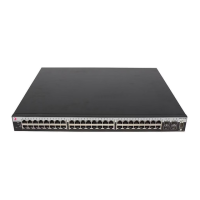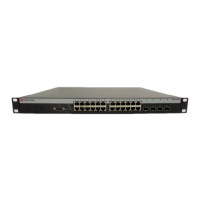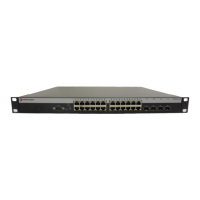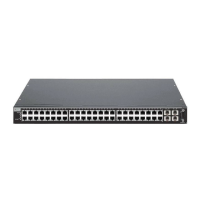show system hardware
3-14 Basic Configuration
Thefollowingtableprovidesanexplanationofthecommandoutput.
show system hardware
Usethiscommandtodisplaythesystem’shardwareconfiguration.
Syntax
show system hardware
Parameters
None.
Defaults
None.
Table 3-4 show system Output Details
Output What It Displays...
System contact Contact person for the system. Default of a blank string can be changed with the
set system contact command (“set system contact” on page 3-27).
System location Where the system is located. Default of a blank string can be changed with the
set system location command (“set system location” on page 3-26).
System name Name identifying the system. Default of a blank string can be changed with the
set system name command (“set system name” on page 3-26).
Switch x Indicates the switch position in the stack. When multiple switches are in a stack,
information for each switch is displayed.
PS1-Status Operational status for the primary power supply.
PS2-Status Operational status for the secondary power supply, if installed.
Fanx-Status Operational status of the fan(s).
Temp-Alarm Indicates status of temperature alarm — on, off. The status will show NA (not
available) on switches that do not support this functionality.
Thermal Threshold Percentage of thermal threshold reached. The status will show NA (not available)
on switches that do not support this functionality.
Temp alarm max
threshold
The temperature alarm threshold expressed as a percentage of the maximum
rated. The default value is 100%.
Temp alarm trap Indicates whether the sending of temperature alarm traps is enabled or disabled.
The default is disabled.
Temp alarm syslog Indicates whether temperature alarm syslog messages are enabled or disabled.
The default is disabled.
Uptime d,h:m:s System uptime.
Logout Time an idle console or Telnet CLI session will remain connected before timing
out. Default of 5 minutes can be changed with the set logout command (“set
logout” on page 3-29).

